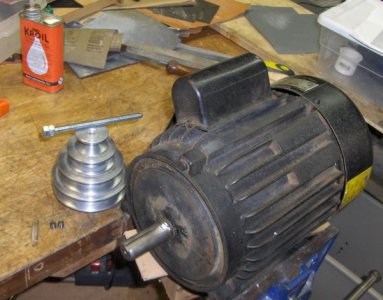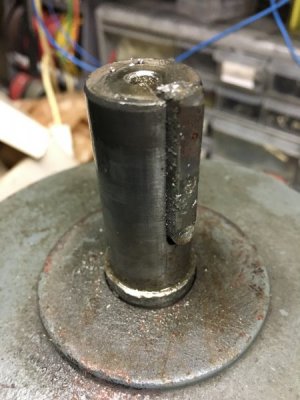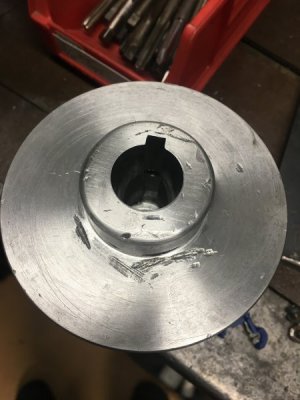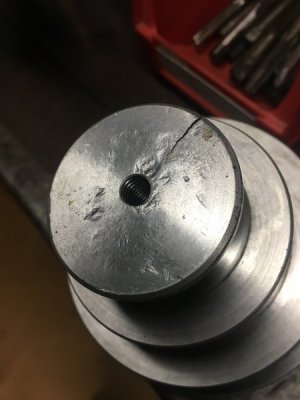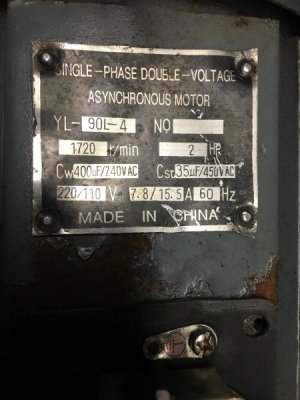- Joined
- Feb 17, 2013
- Messages
- 4,406
Couple years ago I had to remove the pulley from my (Grizzly RF-30 clone) mill motor. I drilled and tapped the pulley, fashioned a suitably long draw bolt out of a piece of handy rod and two nuts. IIRC, the drill depth was longer than my tap, so I had to counterbore in a short distance, to get the tap to thread to the end of the closed section of the pulley. Note the two setscrews and the key on the bench next to the pulley. Of course, once you've drilled through the closed section, you might want to shortcut the process by squirting in some Kroil or other penetrating lubricant. Still a good idea to thread the hole ... for use of the draw screw some time in the future.Drill and tap the end of the pulley for a draw bolt?
